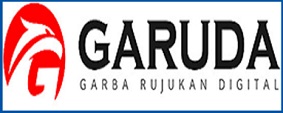The Development of Teacher Handbook on Preschool-Aged Children’s Aggressive Behavior and IT-Based Solutions
DOI:
https://doi.org/10.26555/jecce.v2i2.1040Keywords:
teacher handbook, teacher, preschool-aged children’s aggressive behavior, e-learningAbstract
The current study aimed at developing a teacher handbook on preschool-aged children's aggressive behavior and its solution. The study was conducted in Kindergarten in Turi Subdistrict, Sleman, Yogyakarta. The subjects of the study were Kindergarten teachers, students, and parents. The data collection method consisted of interview, observation, and questionnaire. The present study was categorized as Research and Development (R&D). The study was conducted in six phases. Phase I involved survey and preliminary study, phase II involved prototyping of teacher handbook, phase III was initial evaluation, phase IV was product tryout, phase V was product revision, phase VI was the final product. The data were analyzed using quantitative analysis. Then it was converted into qualitative data by percentage formula in order to point out the product quality. The data were then analyzed using qualitative and quantitative descriptive method. The result of the study showed that the use of teacher handbook significantly affects the decrease in preschool-aged children's aggressive behavior. The result of paired sample t-test on the questionnaire score before and after the use of the teacher handbook was sig. (2-tailed) 0.000 < 0.05
References
Asendorpf, J. B., Denissen, J. J. A., & van Aken, M. A. (2008). Inhibited and aggressive preschool children at 23 years of age: Personality and social transitionsintoadulthood. Developmental Psychology, 44(4), 997–1011. http://dx.doi.org/10.1037/0012-1649.44.4.997
Bandura, A. (1977). Social Learning Theory.
Baron, R. A., & Byrne, D. (2009). Psikologi Sosial (terjemahan) edisi kesepuluh. Erlangga.
Craig, et. A. (2001). Effects of violent video game on aggressive cognition, aggressive affect, psychological arousal, and prosocial behavior: A meta-analytic review of the scientific. https://doi.org/10.1111/1467-9280.00366
Depdiknas. (2008). Kurikulum Tingkat Satuan Pendidikan. Dikmenum Depdiknas.
Eko, S. P. (2016). Sistem penilaian otomatis jawban esai pada e-learning belajar disini.com. Jurnal Teknologi Informasi Dan Ilmu Komputer, 3(4), 248–252.
Fitri, R., & Asyikin, A. N. (2017). Aplikasi penilaian ujian essay otomatis menggunakan metode cosine similarity. Jurnal Poros Teknik, 7(2), 88–94. https://doi.org/10.31961/porosteknik.v7i2.218
Sugiyono. (2008). Metode Penelitian Kuantitatif, Kualitatif, dan R&D. Alfabeta.
Yulianti, D. (2010). Bermain Sambil Belajar Sains di Taman Kanak-Kanak. PT Indeks.
Downloads
Additional Files
Published
How to Cite
Issue
Section
License
Authors who publish with this journal agree to the following terms:
- Authors retain copyright and grant the journal right of first publication with the work simultaneously licensed under a Creative Commons Attribution-ShareAlike 4.0 International License that allows others to share the work with an acknowledgement of the works authorship and initial publication in this journal.
- Authors are able to enter into separate, additional contractual arrangements for the non-exclusive distribution of the journals published version of the work (e.g., post it to an institutional repository or publish it in a book), with an acknowledgement of its initial publication in this journal.
- Authors are permitted and encouraged to post their work online (e.g., in institutional repositories or on their website) prior to and during the submission process, as it can lead to productive exchanges, as well as earlier and greater citation of published work (See The Effect of Open Access).












